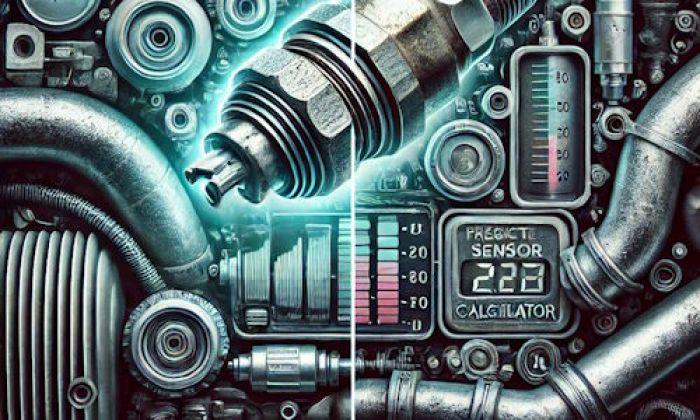The Ford Focus is one of the successful products of Ford in the compact car segment of the market. It is characterized by its sporty stance and nimble performance making it highly maneuverable in city or highway drives.
Engine malfunction, acceleration reduced message highlights
- Common reasons:wiring, grounding, battery, alternator
- How to fix:check the battery, check the alternator, confirm there are no visible wiring problems
- Possible consequences:engine may go to limp mode, it may eventually stall
- Priority level:High
- Can you drive?Carefully
- DIY repair:Possible but complicated
- Repair price range:$150-$800

Common Causes and Solutions to the Problem
If you get the "Engine Fault Service Now" message which is more common for the Focus, please click here to get more information about this warning.
According to Focus owners, together with Ford vehicle owners in general, the "Engine Malfunction Acceleration Reduced" can be due to the following factors:
1. Faulty Alternator
There's no clear-cut diagnosis about what could be causing the problem. However, the consensus is that it is primarily due to a faulty alternator.
When your Ford Focus alternator is not working correctly, it can cause the "Engine Malfunction Acceleration Reduced" to appear on the dashboard. This error means that your car's engine is not getting enough power, which can lead to reduced performance and fuel economy.
There are a few ways to diagnose the cause of this problem. First, check the alternator belt to see if it is loose or damaged. The alternator belt is important because it transfers power from the engine to the alternator. If it is loose or damaged, it can cause the alternator to fail, which can lead to the said error as well as other fault codes.
Next, assess the alternator itself for any visible signs of damage. Have the charging system checked by a professional also to make sure that it is working properly.
If you suspect that the alternator itself is not working correctly, you can use a multimeter to test it. First, turn off the engine and disconnect the negative battery cable. Then, remove the alternator's cover and inspect it for any damage.
Next, connect the red lead of the multimeter to the positive terminal on the alternator and the black lead to ground. Turn on the multimeter and set it to "DC volts."
The multimeter should read between 12 and 14 volts. If it does not, then the alternator is not working correctly and will need to be replaced.
You can test the charging system using a multimeter, too. Again, turn off the engine and disconnect the negative battery cable. Remove the alternator's cover and inspect it for any damage.
After that, connect the red lead of the multimeter to the positive terminal on the alternator and the black lead to ground. Turn on the multimeter and set it to "AC volts."
The multimeter should read between 14 and 16 volts. If it does not, then there is a problem with your charging system and you will need to have it checked by a professional.
Once you have diagnosed the cause of the problem, there are a few possible solutions. If the alternator belt is loose, simply tighten it or replace it if necessary. If the alternator itself is damaged, you will need to replace it. Lastly, if the battery or charging system is not working properly, you may need to have them repaired or replaced.
There are a few other signs that can indicate a problem with the alternator, which can help your diagnosis. One is that the battery will not hold a charge for very long and it tends to drain quickly.
Another sign is that the headlights may start to flicker or dim when the engine is running. This means that the alternator is not charging the battery correctly and is not providing enough power to the car's electrical system.
Furthermore, if you hear a whining noise coming from the alternator, this can point out that it is not working correctly.
2. Draining or Drained Battery
A draining or drained battery can heavily contribute to the "Engine Malfunction Acceleration Reduced" error in the Ford Focus. Aside from the alternator, the battery is another area where you should begin your diagnosis because a faulty battery can cause all sorts of problems in the electrical system of your car.
To confirm your suspicion about the battery, the first step is to check its voltage with a multimeter. If the battery voltage is low, it's likely that the battery is the culprit. Another way to diagnose the problem is to check for any loose or damaged wires. If there are any loose or damaged wires, they will need to be repaired or replaced. If the error message is still present after checking the battery and wires, it's possible that there is an issue with the computer system.
Once the root cause of the "Engine Malfunction Acceleration Reduced" error message has been diagnosed, it's time to fix the problem. If the battery is the cause of the problem, it will need to be replaced. If the wires are the cause of the problem, they will need to be repaired or changed. And if the computer system is the source of the problem, it will need to be reset. In some cases, all three of these things may need to be done in order to fix the "Engine Malfunction Acceleration Reduced" error message.
If you're having trouble diagnosing the cause of an "Engine Malfunction Acceleration Reduced" error message in your Ford Focus, it's a good idea to take it to a professional mechanic or car dealership. They will be able to diagnose the problem and suggest the best course of action.
3. Blown Fuse
One more possible cause of this problem is a blown fuse. If you suspect that a blown fuse might be the cause of your engine malfunction, the first thing you should do is check the fuse box. Locate the fuse that controls the engine and see if it's blown.
If the fuse is shorted, you'll see physical signs of damage, such as charring, bubbling, or melting. If the fuse is damaged in any way, you'll need to replace it.
Alternately, if you can't find the blown fuse or if you're not sure which fuse is responsible, you can test each fuse for continuity with a multimeter. Just touch the probes to the two metal contacts on either side of the fuse. If there's continuity, the meter will register a reading. If there's no continuity, the fuse is blown.
If you determine that a blown fuse is responsible for your engine malfunction, you'll need to replace it. To do this, find the right fuse size and rating, and buy a replacement at an auto parts store.
4. Sensor Issues
Another possible cause of an engine malfunction is a faulty sensor. If you suspect that a sensor might be to blame, the best way to diagnose the problem is to take your car to a mechanic or dealership for a diagnostic test. They'll be able to tell you for sure if a sensor is the cause of your engine or electrical problems.
If you think a sensor might be the cause of your engine problems, there are a few things you can do to try and detect it yourself. One way is to check the engine light. If the light is on, that means there's a problem somewhere in the system, and it's worth investigating further. You can also check the sensors directly. Most sensors have a physical connector that you can access, and by checking the voltage or resistance reading with a multimeter, you might be able to tell if the sensor is faulty.
If you do find that a sensor is the cause of your engine or electrical problems, there are a few possible solutions depending on the gravity of the situation. One is to simply replace the faulty sensor with a new one. Another option is to try and clean or repair the sensor if it's possible to do so.
It should be noted that some people find reprieve from this issue by disconnecting the sensor or bypassing it entirely. This option isn't really recommended as it only tends to provide a temporary solution to a problem that has the potential to branch out into more serious troubles for your car down the road.
5. PCM Problems
The PCM is important because it controls how the engine works and other systems in the car. If it's not working properly, it can cause all sorts of problems. If you're getting this error, the first thing you should do is check for updated PCM software. You can usually find this on the Ford website or it can be performed at ease by an experienced car technician.
If there are no updates available, or if updating the software doesn't fix the problem, a more comprehensive diagnostic test on the PCM might be needed. This will help identify any hardware issues that may be causing the problem. If the diagnostic test indicates that the PCM needs to be replaced, you can get a new one from your local Ford dealer or an auto parts store.
Conclusion
Whether it is an engine- or an electrical-related issue causing the "Engine Malfunction Acceleration Reduced" problem in your Ford Focus, you should have the component triggering it fixed as soon as possible. Doing so will save you from dealing with more complicated and expensive repairs along the way.
About the authors
The CarAraC research team is composed of seasoned auto mechanics and automotive industry professionals, including individuals with advanced degrees and certifications in their field. Our team members boast prestigious credentials, reflecting their extensive knowledge and skills. These qualifications include: IMI: Institute of the Motor Industry, ASE-Certified Master Automobile Technicians; Coventry University, Graduate of MA in Automotive Journalism; Politecnico di Torino, Italy, MS Automotive Engineering; Ss. Cyril and Methodius University in Skopje, Mechanical University in Skopje; TOC Automotive College; DHA Suffa University, Department of Mechanical Engineering






Add comment